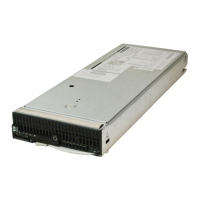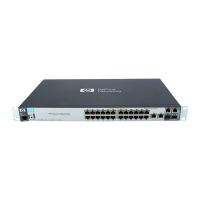HP StoreFabric SN6500B Fibre Channel Switch
c04111398 – DA – 14511 Worldwide — Version 10 — October 10, 2014
mismatches. EGM provides streamlined troubleshooting for more effective fabric monitoring and
diagnosis.
HP SAN Network Advisor Professional, Professional Plus, and Enterprise enable EGM functionality.
Customers have EGM functionality enabled within the hardware product and need only to make the
decision around which management application is right for them.
In-flight Compression
and Encryption
In-flight compression optimizes network performance within the data center and over long-distance
links. Data is compressed at the source and uncompressed at the destination. Performance varies by
data type, but generally achieve 2:1 compression with minimal impact on performance. Compression
can be used in conjunction with in-flight encryption.
In-flight encryption minimizes the risk of unauthorized access for traffic within the data center and
over long-distance links. It is switch-to-switch encryption, not device or data-at-rest encryption. Data
is encrypted at the source and decrypted at the destination. Encryption and decryption are performed
in hardware using the AES-GCM-256 algorithm, minimizing any impact on performance. Encryption can
be used in conjunction with in-flight compression. This is complementary to data-at-rest encryption
provided by the Encryption SAN Switch and the Encryption Blade for B-series SAN Directors.
Adaptive Networking (AN) is an optional family of technologies which allow flexible control of traffic
movement within the fabric which deliver application aware management of fabric resources.
Applications may be used with multiple protocols and multiple classes of service. It includes the
following features:
Ingress Rate Limiting:
Allows the ingress bandwidth of a port to be throttled to a rate lower than negotiated with the SAN
node. This could be very useful for enterprises offering stepped levels of service and enforcing SLAs.
Quality of Service (QoS):
Enables zones with high, medium, and low priorities within a fabric on a zone by zone basis. This can
be very useful for prioritizing array replication over MANs and WANs over less critical traffic.
Traffic Isolation Zones:
Defines paths through a fabric for some or all nodes. Failover allows a non-preferred path to be used if
the preferred fails. TIZs use failover by default but it can be disabled if traffic should stop if a preferred
path fails. TIZ can be used to manually map out traffic flows within a fabric based on application,
priority, and topology.
Server Application
Optimization
Server Application Optimization (SAO) improves overall application performance for physical servers
and virtual machines. SAO, when deployed with B-Series Fibre Channel HBAs, extends B-Series
Adaptive Networking from the B-series SAN fabric to the server infrastructure. This delivers
application-level, fine-grain Quality of Service (QoS) management to the HBAs and related server
applications.
